Italian salsa verde is an easy and versatile sauce you can use to drizzle on boiled, grilled, and roasted vegetables and on many other foods.
While the original Italian salsa verde may sometimes contain egg yolks and anchovies, we make our recipe vegan so that anyone can enjoy it.
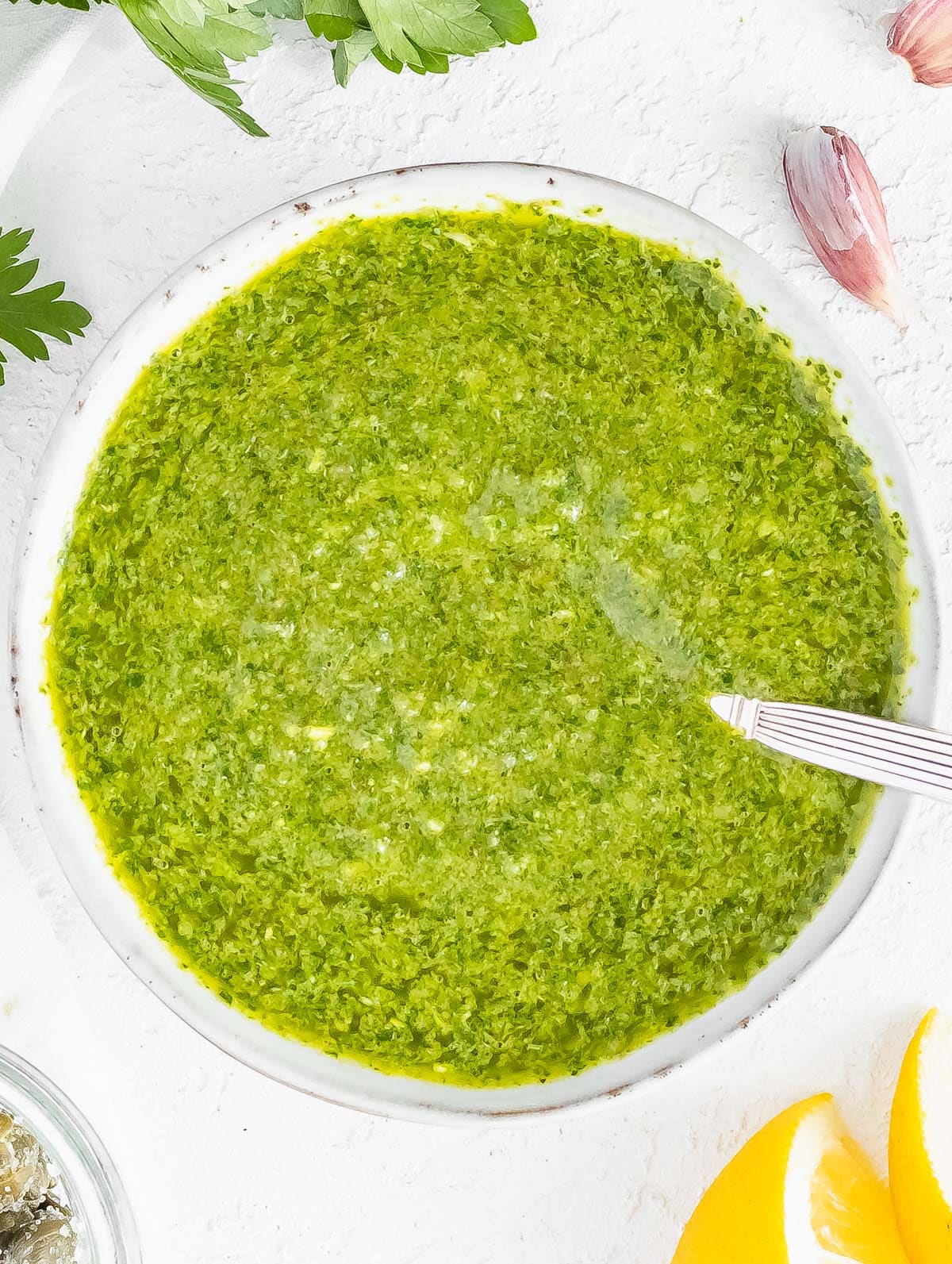
Check out our best sauce recipes.
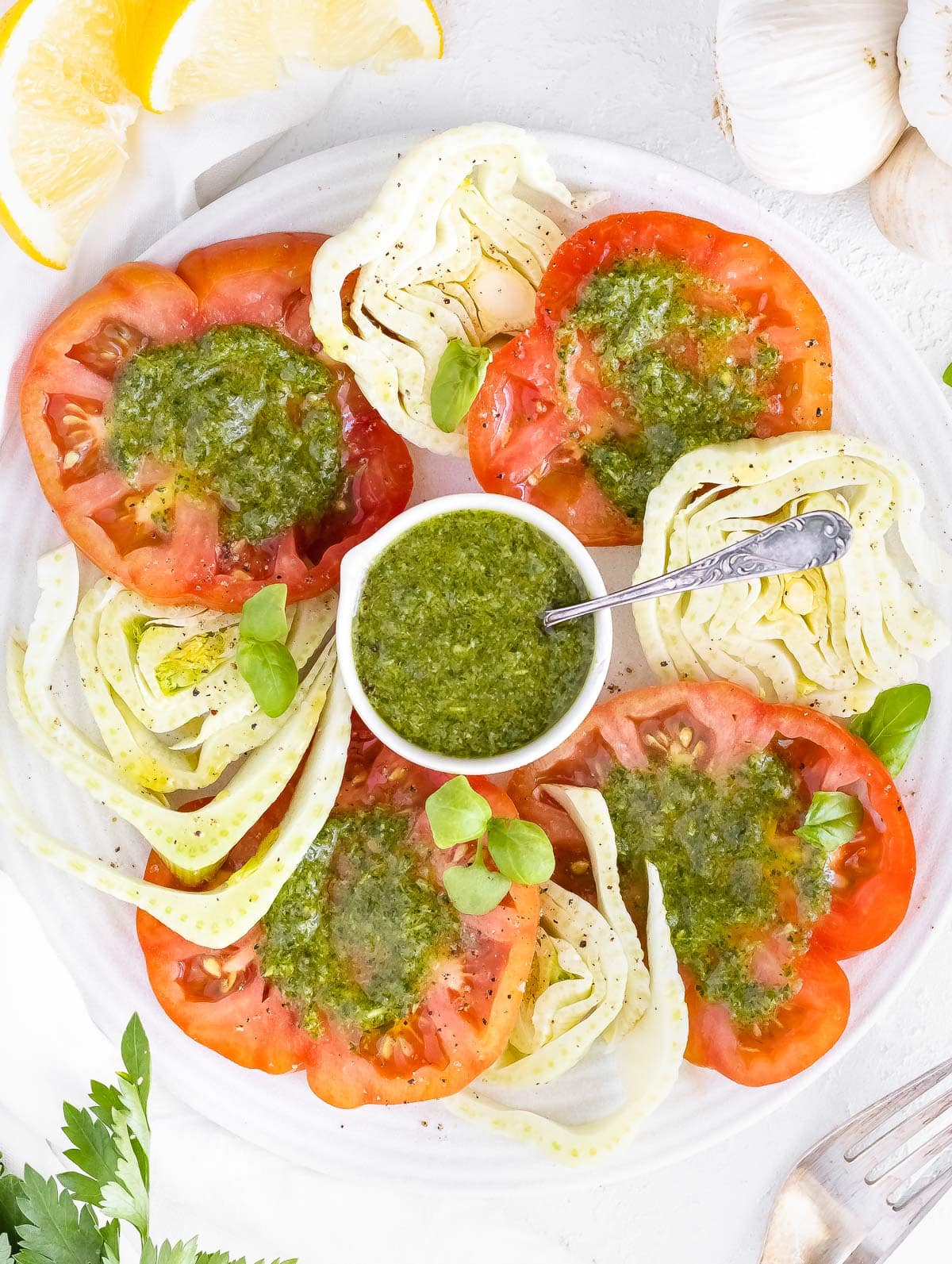
First things first, despite its name, Italian salsa verde has nothing to do with Mexican salsa verde where the main ingredients are tomatillos and cilantro.
Italian salsa verde is incredibly similar to Argentinian Chimichurri. The main ingredients are flat-leaf parsley, olive oil, garlic, vinegar or lemon juice, and capers.
This sauce, sometimes known as bagnet verd or bagnet Piemontese, was invented in the 19th century in the northern Italian region of Piedmont and quickly spread down through the Italian peninsula.
If you have a chance to travel around Italy you’ll discover slightly different variations of salsa verde. In Piedmont, you’ll see it served with “Bollito”. Stop by in Florence, and you’ll see it used in the famous Lampredotto sandwich.
When in Rome, you’ll see it drizzled on “pizza al taglio” or grilled vegetables. Down to Sicily, you’ll find a version of salsa verde called salmoriglio, served with grilled fish and meat.
In our family, we use salsa verde to add flavor to grilled, steamed, boiled, oven-roasted, or air-fried vegetables. We also use it as a dressing for chickpeas and beans, especially white cannellini beans and cranberry beans.
Finally, we often drizzle salsa verde on raw vegetables, like tomatoes and fennel, grilled tofu, flatbread pizza, piadina, or focaccia. It’s a super-easy way to make these dishes pop!
Ingredients
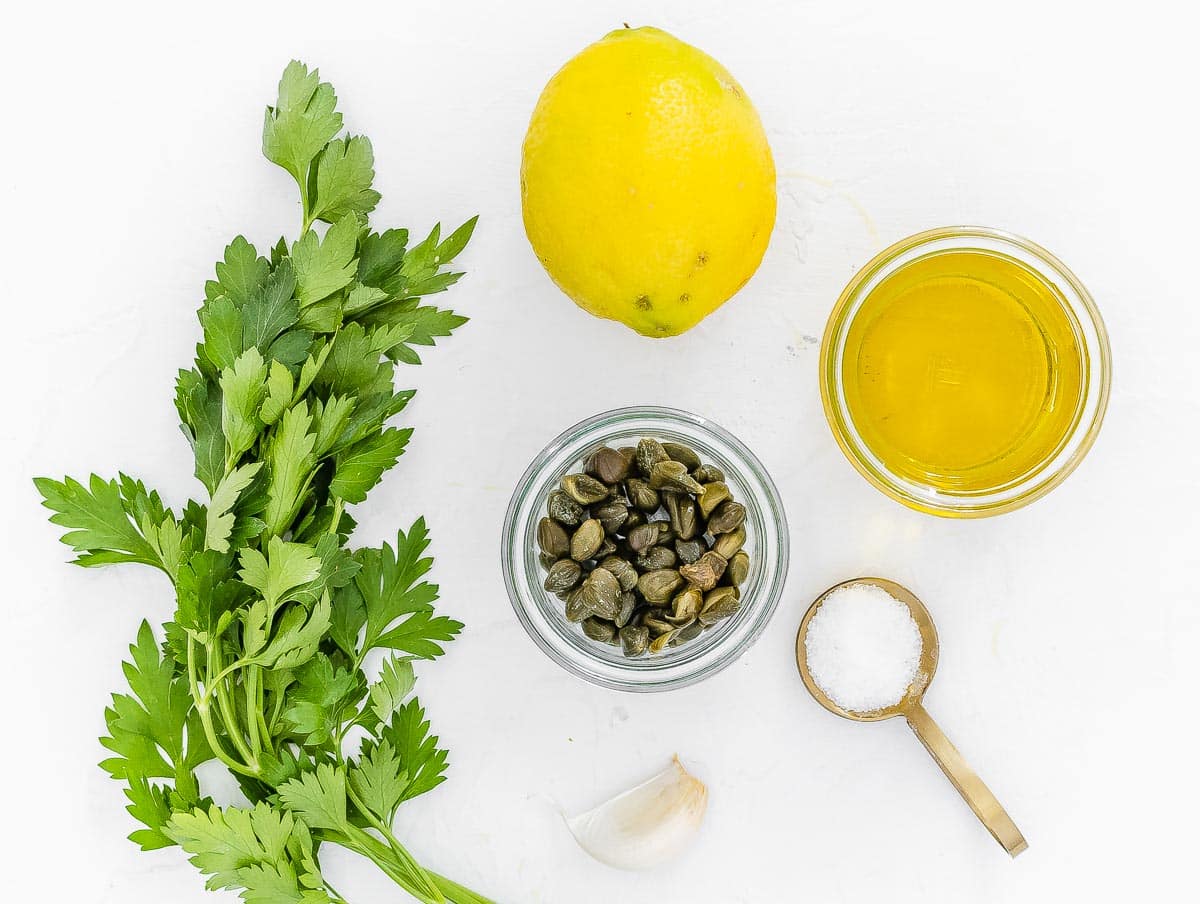
Parsley: flat-leaf parsley is what is traditionally used in Italy for all preparations. It has a bolder, more aromatic flavor than curly parsley.
Capers: capers add umami, saltiness, and a touch of acidity to the sauce. We recommend using non-pareil capers preserved in salt. If you can’t find those, then go for the non-pareil capers in brine.
Olive oil: extra virgin if you can. It’s more aromatic and healthier than regular olive oil.
Garlic: another key ingredient in Italian salsa verde. Add more or less based on how much you love it.
Lemon: we use both lemon zest and lemon juice. In this case, it’s best to use an organic lemon. You can replace lemon with vinegar. White wine vinegar and red wine vinegar are both ok.
Salt: to add flavor. Add more or less based on your dietary preferences and needs. We recommend using sea salt or kosher salt.
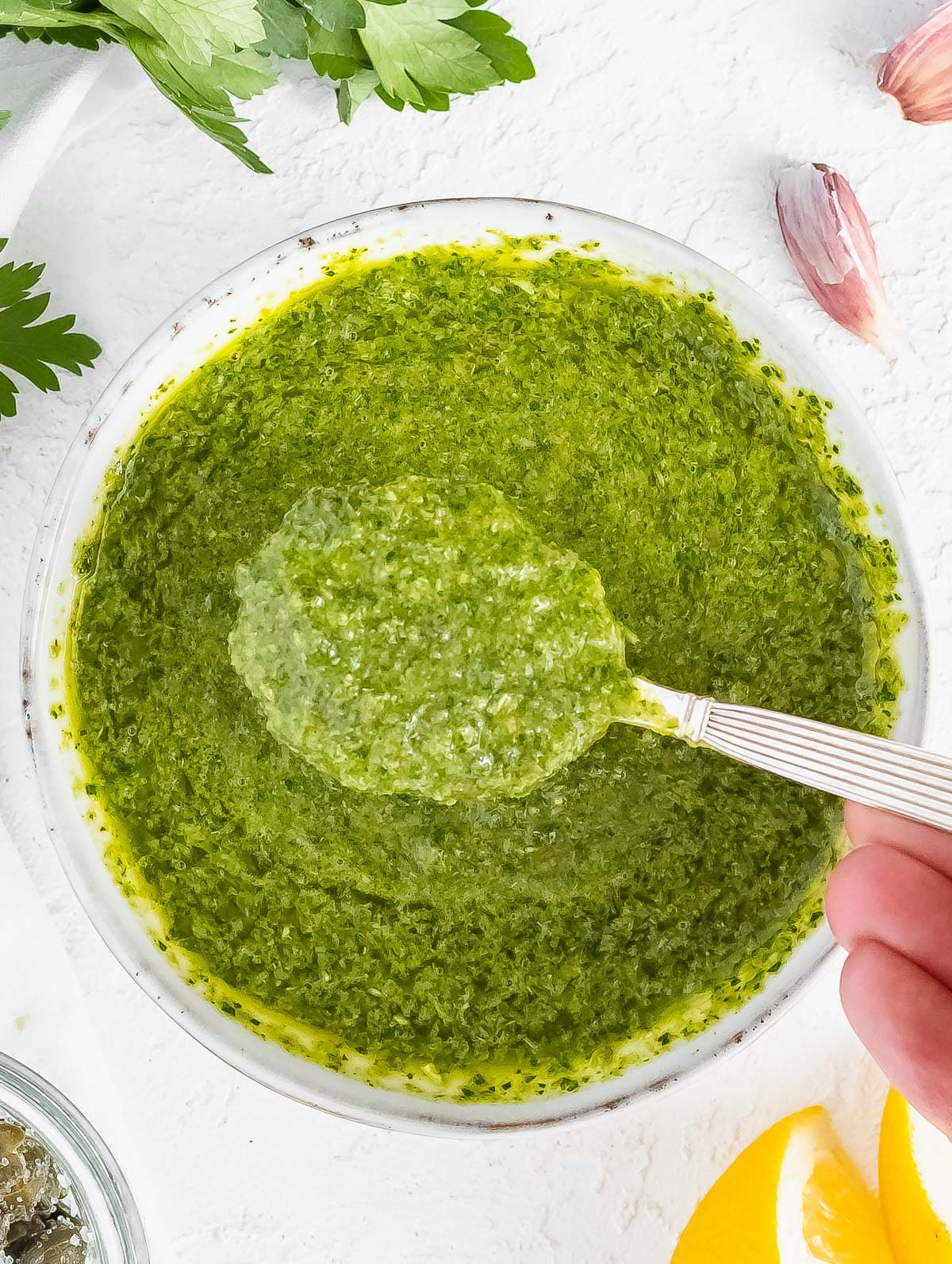
Instructions
You can make Italian salsa verde by hand or in a food processor/blender. Here we are making it in a small food processor.
The first step is to peel and cut the garlic lengthwise and remove its core if any. We find the core of the garlic hard to digest when eaten raw.
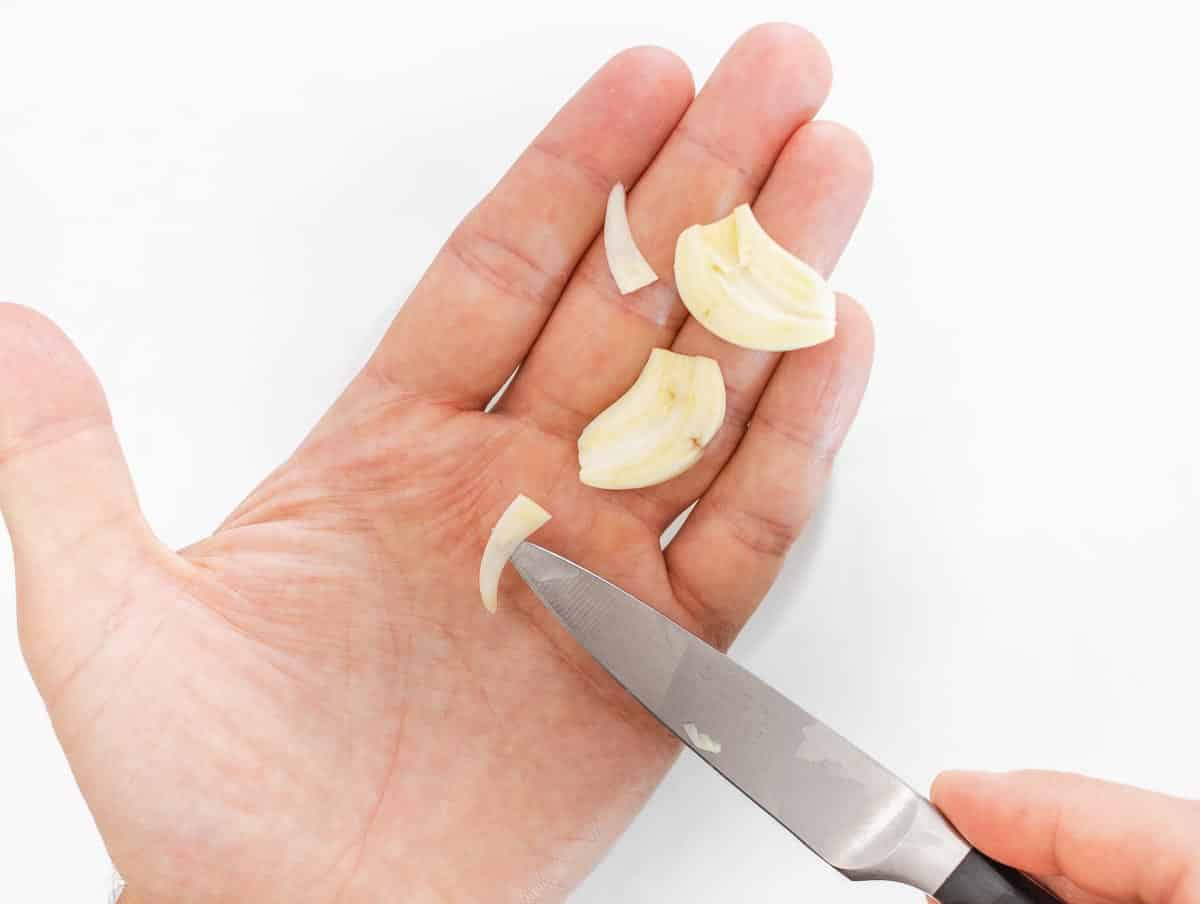
To a food processor or to a blender, add the garlic clove, the zest of the lemon, freshly squeezed lemon juice (without the seeds), capers, olive oil, salt, and flat-leaf parsley including the stems if they are not too thick.

Pulse a few times until the ingredients are finely chopped and turn into a salsa verde.
Tip: we pulse instead of blending continuously to keep the temperature cool and slow down the oxidation of the parsley.
As you can see in the picture, salsa verde made with a blender or food processor is quite smooth and emulsified.
If you make salsa verde by hand, try to chop the parsley, capers, and garlic as finely as you can, then add them to a bowl with the other ingredients and stir with a spoon.
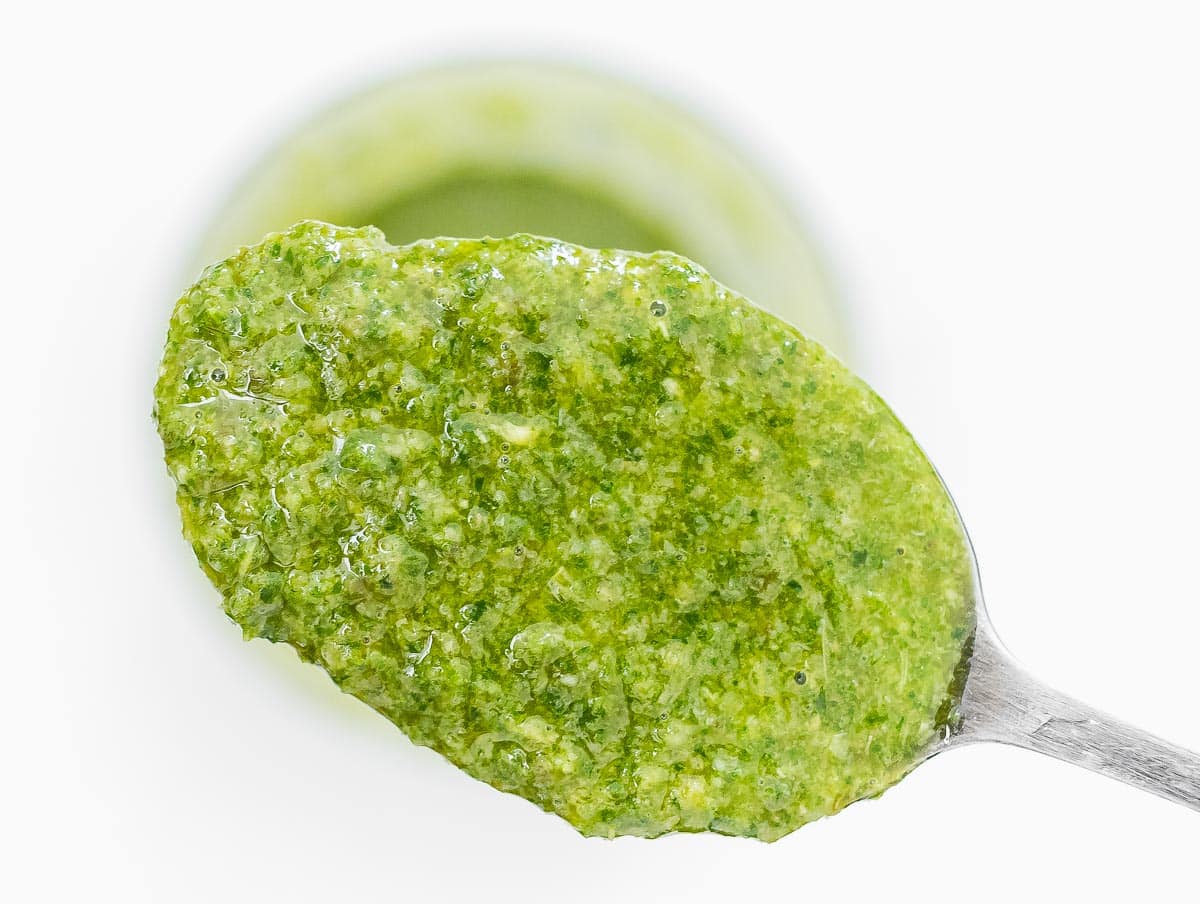
Serving suggestions
Grilled, baked, and air-fried vegetables
You can serve Italian salsa verde on any grilled, oven-roasted, or air-fried vegetables. Try it on eggplants, zucchini, mushrooms, sweet potatoes, and tofu. You can even add a pinch of red pepper flakes to spice things up.
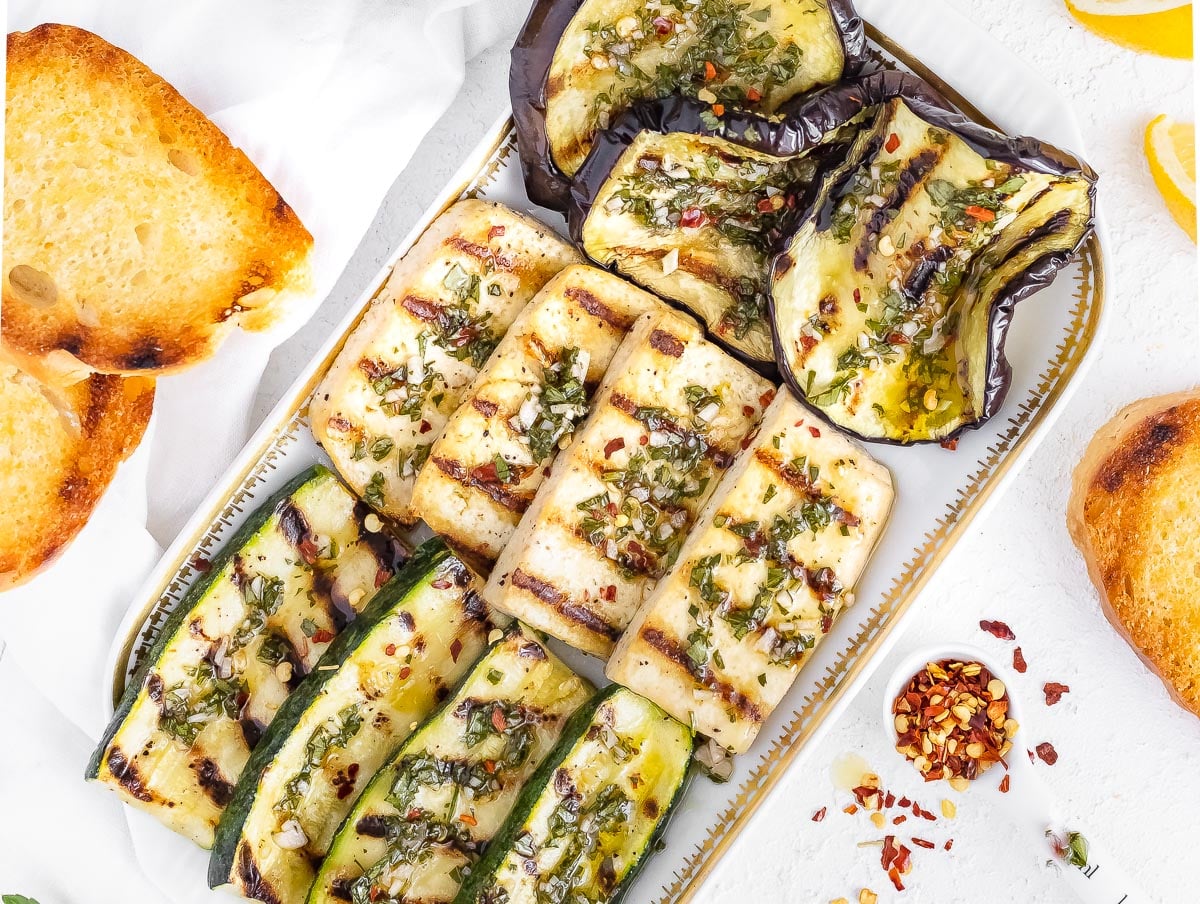
Raw vegetables
It’s also delicious on raw vegetables. We made this tomato and fennel Caprese salad, then drizzled it with salsa verde and garnished a few basil leaves.
We served it with lightly toasted bread drizzled with extra virgin olive oil. It was so simple yet absolutely divine. It’s become one of our favorite summer dishes.
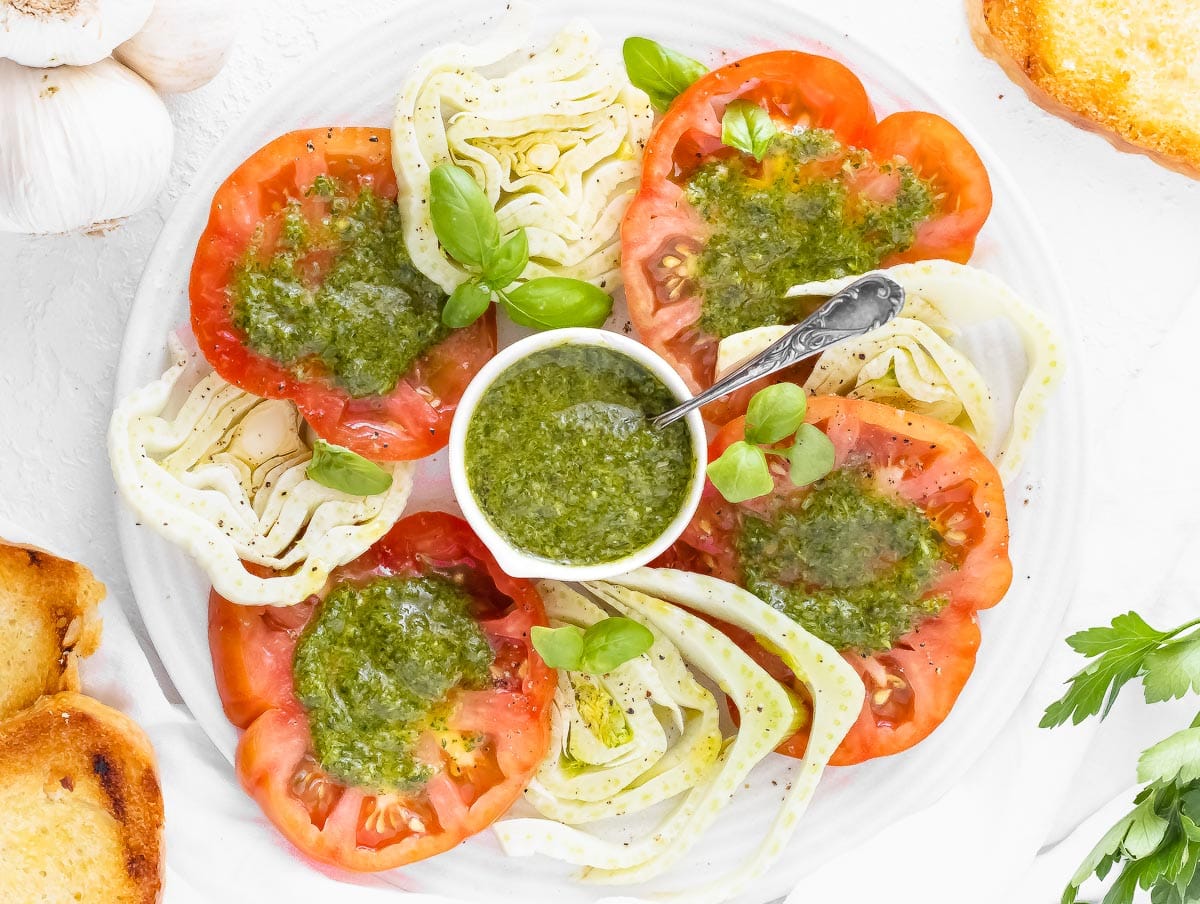
Beans and other legumes
Another incredible way to enjoy this Italian salsa verde is as a dressing with beans or on top of bean dip. Here we slowly roasted some carrots, then we mashed them and arranged them on a plate.
We boiled some canned cannellini beans for 5 minutes, then we tossed them in a few tablespoons of the salsa verde. We arranged them on the mashed carrots and drizzled them with more salsa verde, tahini sauce, chili oil, a squeeze of fresh lemon, and some toasted pinenuts. The picture speaks for itself. It was a glorious dinner.
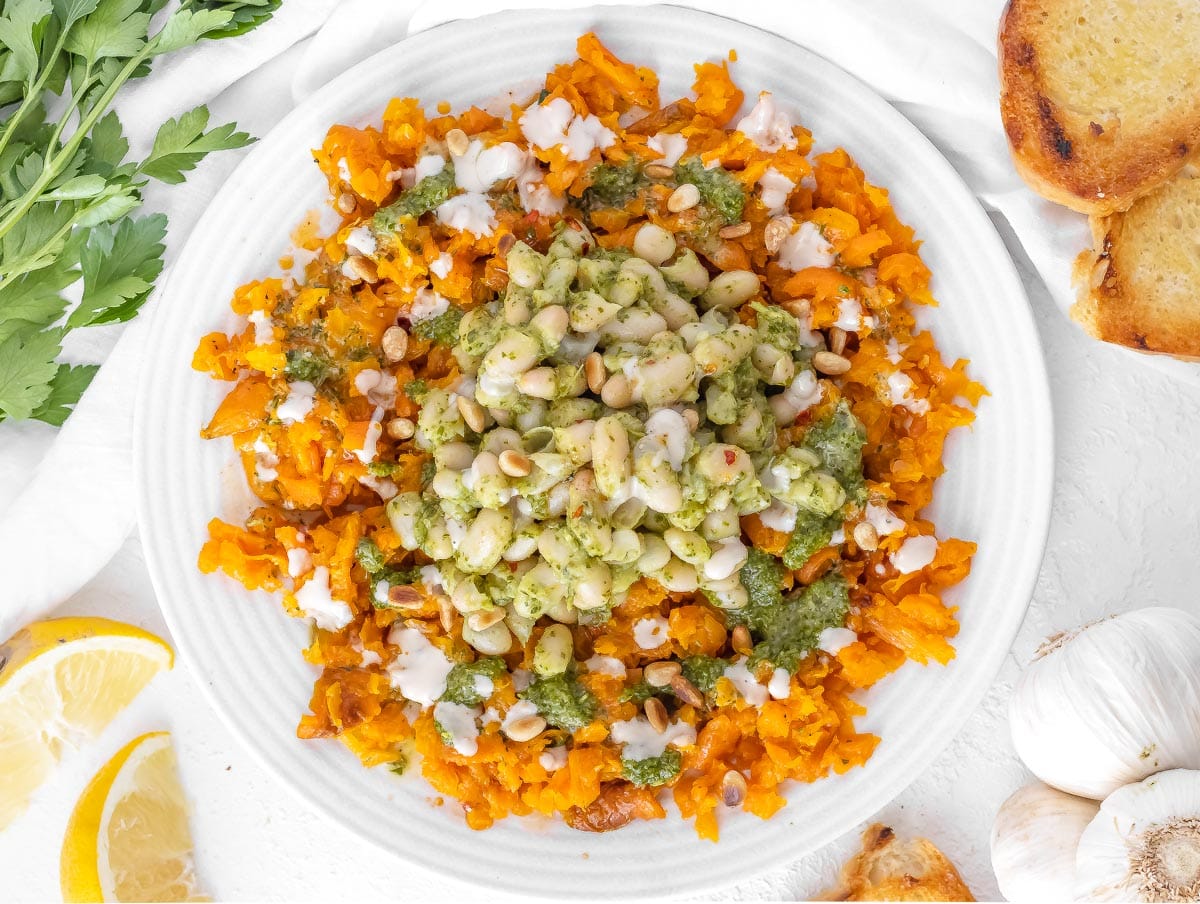
Steamed and boiled vegetables
Boiled and steamed veggies also go really well with salsa verde. We tried it on steamed asparagus, steamed cauliflower, boiled potatoes, and steamed artichokes. It adds a bright, zesty, and herby flavor to those dishes with an otherwise more muted flavor.
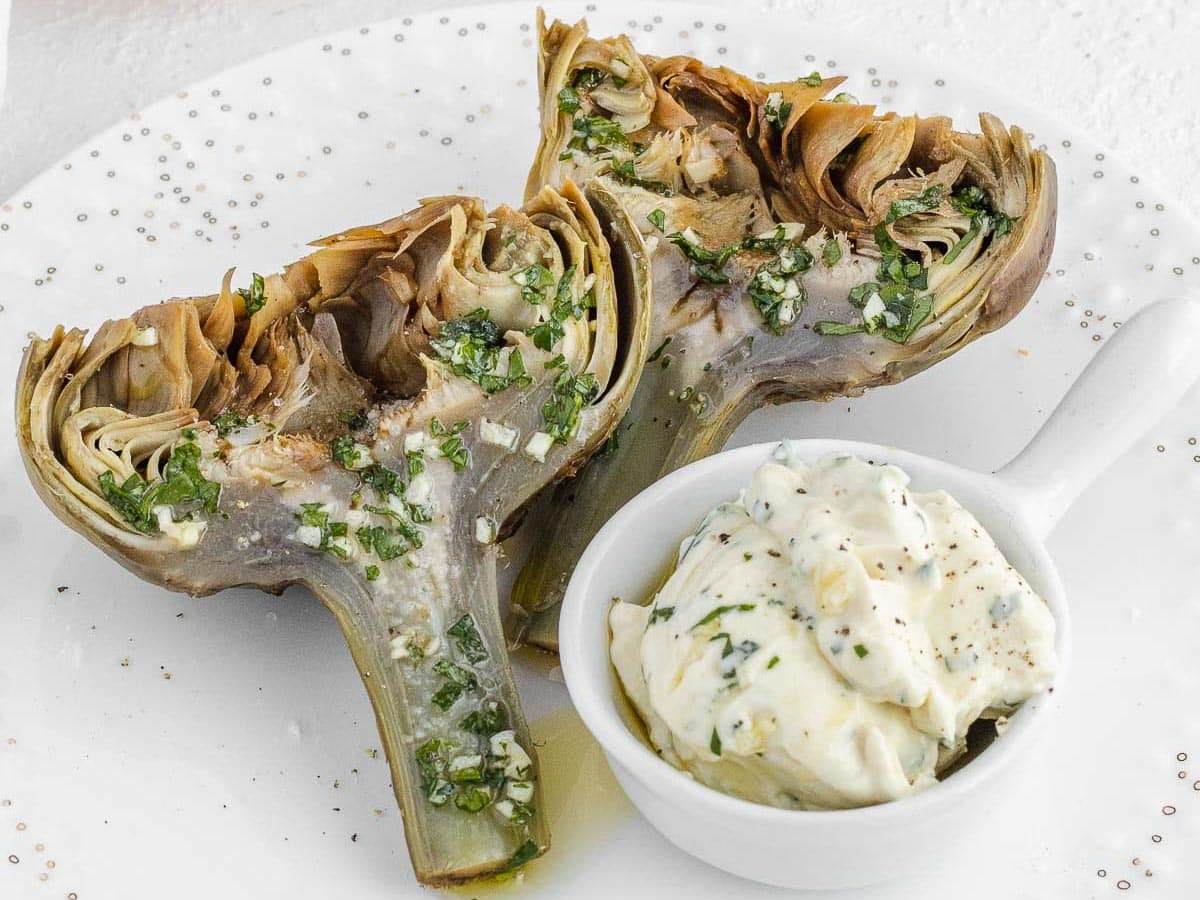
More vegan sauce recipes
If you liked this salsa verde, you might also enjoy our other vegan sauces:
- Mustard dressing: our vegan alternative to honey mustard dressing, light, sweet and tangy.
- Tahini sauce: a creamy addition to tofu salad and wraps.
- Cilantro lime dressing: perfect for taco Tuesday and a good pairing with Mexican grain bowls.
- Chipotle sauce: drizzle on your favorite vegan salad, flatbread pizza, or add to tacos.
- Vegan mayo: an easy 5-minute recipe that is one of our favorite sauces for potatoes and veggie fries.
- Quick chili oil: a refreshing way to infuse your soup, such as tofu soup or butternut squash soup.
- Green goddess dressing: adds creaminess and bold flavor to anything, from couscous salad to potato salad.
- Chimichurri sauce: A staple in our fridge, it pairs perfectly with fresh veggies and pasta salad.
Which sauce is your favorite for salads and veggies? We’d love to hear from you, let us know in the comments below.
Questions
Salsa Verde is both Mexican and Italian, although they are different recipes. Mexican salsa verde is generally made with tomatillos, cilantro, lime juice, jalapeno, onion, salt, and olive oil. Italian salsa verde is made with flat-leaf parsley, capers, olive oil, garlic, lemon juice or vinegar, salt, and sometimes anchovies.
Chimichurri and Italian salsa verde are almost the same thing. Chimichurri is used in South America (Argentina, Uruguay, and Paraguay), while salsa verde is used in Italy. The ingredients are almost exactly the same, including flat-leaf parsley, olive oil, garlic, vinegar or lemon juice, and salt. Chimichurri also includes oregano, salsa verde doesn’t. Salsa Verde often includes capers, anchovies, and breadcrumbs, chimichurri doesn’t. They are both used as a condiment on meat, fish, and vegetables, although in Argentina chimichurri is primarily used on Asado, or barbequed meats, while in Italy salsa verde is used primarily on boiled meat and fish.
No, pesto and salsa verde are two completely different recipes. Pesto is made with basil, pine nuts, olive oil, parmesan cheese, garlic, and salt, and it’s mainly used with pasta. Italian Salsa Verde is made with flat-leaf parsley, capers, olive oil, garlic, salt, and lemon juice or vinegar, and it’s primarily used on meat, fish, and vegetables.
Storage
Store Italian salsa verde in an airtight container in the fridge for up to 5 days.
You can freeze salsa verde for up to a month. To do so, transfer into a jar, or into ice cube trays. Then when frozen you can put the ice cubes in a freezer bag. Thaw in the fridge. Do not microwave and do not freeze multiple times.
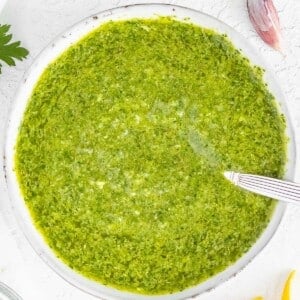
Italian Salsa Verde
Equipment
- Blender or food processor, or knife
Ingredients
- 1 packed cup flat-leaf parsley
- 2 tablespoon capers
- 1 clove garlic
- 2 tablespoons lemon juice + 1 teaspoon lemon zest
- ¼ cup extra virgin olive oil
- ¼ teaspoon salt
Instructions
- You can make Italian salsa verde by hand or in a food processor/blender. Here we are making it in a small food processor.The first step is to peel and cut the garlic lengthwise and remove its core if any. We find the core of the garlic hard to digest when eaten raw.
- To a food processor or to a blender, add the garlic clove, the zest of the lemon, freshly squeezed lemon juice (without the seeds), capers, olive oil, salt, and flat-leaf parsley including the stems if they are not too thick.
- Pulse a few times until the ingredients are finely chopped and turn into a salsa verde.
- Drizzle on anything you want, from cooked or raw veggies to tofu, flatbread, and toasted bread.
Notes
Nutrition
You might also like:
Collections
How to Cook Artichokes + Easy Recipes
Recipes
30 Easy Tofu Recipes
Collections


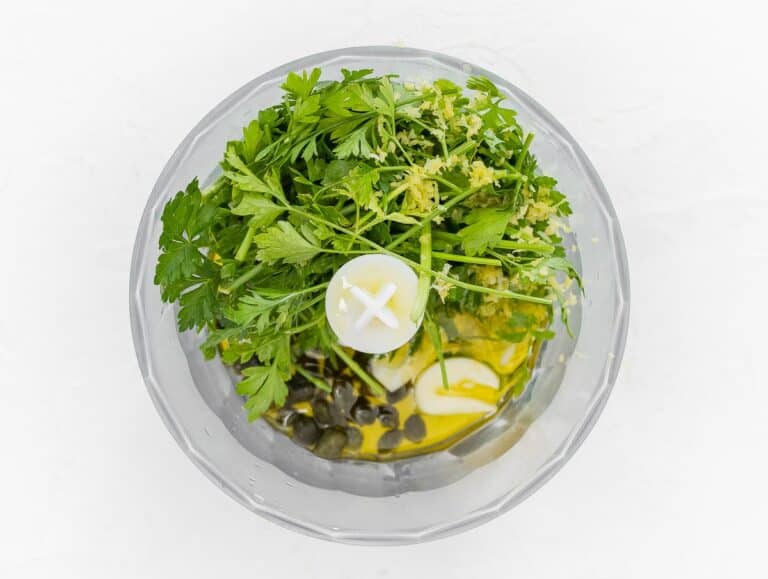

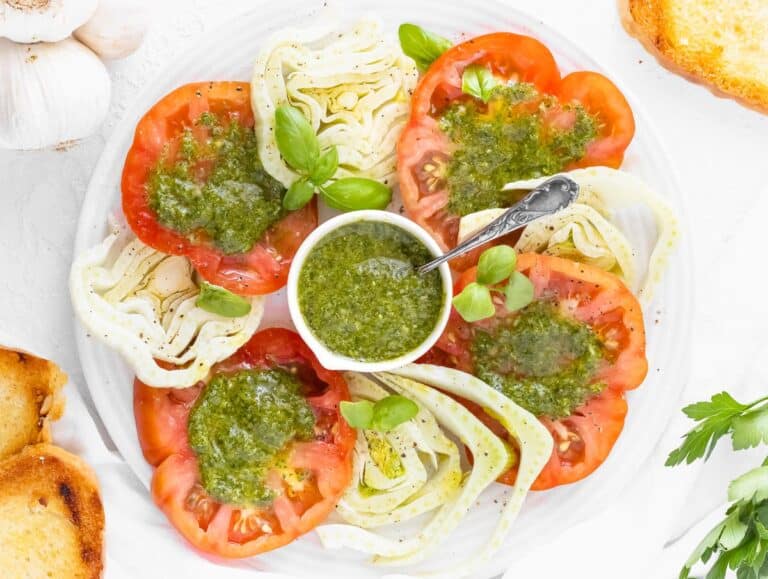
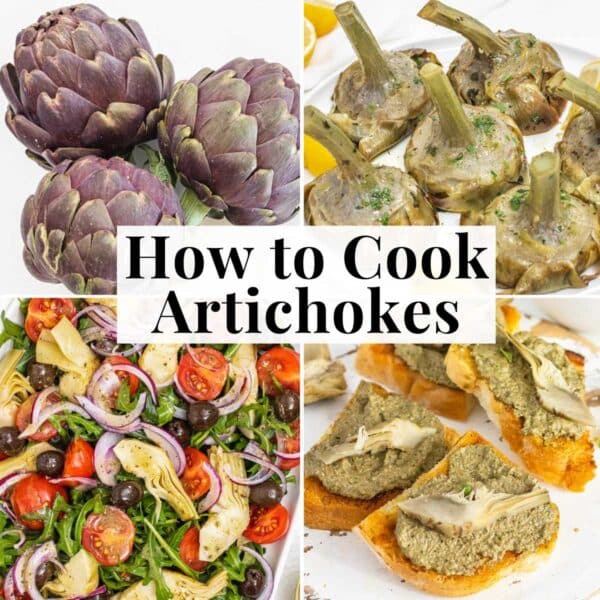



Thank you for the vegan salsa verde recipe! I had it in Italy (near Florence where my ancestors come from) and I recall many years ago anchovy was the key ingredient, but I am vegetarian now and found your sauce to be excellent! Mille Gracie!
Hi Francesca, I’m so happy that you enjoyed this recipe!
How curious that your ancestors are Florence, we live just two hours from there 😉 Thanks for taking the time to leave some feedback!
I’m Italian and my mum used to make this when we were little. I loved it! And your recipe is very close to the original, which as you say wasn’t vegan as it included anchovies. Thank you for sharing the recipe; it’s great to be eating this again and reminds me of my mum.
Hi Anna,
That’s wonderful – I am really happy that this recipe made you think of your mum 🥰
Thank you for sharing your memory with us. All the best,
Louise
Thank you so much for this – easier than I’ve seen – and really great over roasted eggplant, peppers, squash! (Italian chef tried to show me but he poured the olive oil in during blending and I never could get it to blend right)
Hi Maryann, thanks so much for leaving a comment here! It’s a great sauce for veggies (I also love it with bruschetta), I’m happy it turned out well for you. Have a wonderful day, cheers Nico